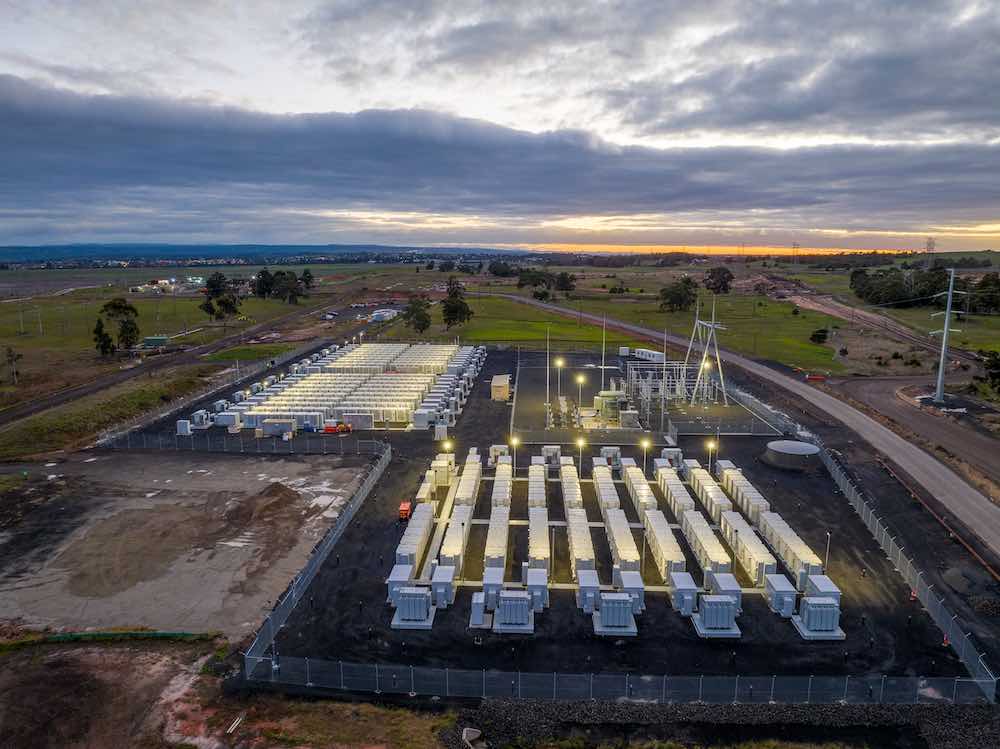The addition of a number of new big battery projects is being felt on Australia’s main grid, with a big leap in the record for battery charging in the middle of the day over the weekend, and continued to displace gas as a provider in the evening peak in Victoria.
According to grid data collector NEMLog GPE2, the record for battery charging leaped to 766 MW on Sunday at 12.55pm, up more than 110 MW from its previous peak of 650 MW set in January.
Much of this activity was focused in Victoria, which hosts the country’s biggest fully operating battery, the 300 MW, 450 MWh Victoria Big Battery, and the 150 MW, one hour Hazelwood battery, (pictured above), the first battery to be connected to the site of a former coal fired power station.
Victoria set its own new record for battery charging at the same time, a new peak of 424 MW, although NEMLog noted that this was only slightly above the previous record set last Thursday.
At the time of the new battery charging records, prices across the main grid were mostly negative, at an average of minus $3 a megawatt hour, and particularly in Victoria, where prices had fallen to minus $30/MWh.
The battery charging was soaking up three per cent of total production of the grid of just under 24 gigawatts, with pumped hydro soaking up another 2.8 per cent.
Interestingly, battery storage in Victoria continues to displace gas as a provider into the evening peak, with more than 200 MW of battery output on Saturday night, and zero from the state’s peaking gas generators. Battery storage often supplies more into the evening peak than the gas generators, particularly at lower peak prices.
This is just a taste of the anticipated changes in Australia’s grid in the coming decade along with the growth of wind and solar, and the huge amounts of storage – particularly batteries – that are being added to the network.
More than 4 GW of battery capacity is currently being added to the grid, and another 9 GW (with an average four hours storage) is being sought through the new Capacity Investment Scheme. The CIS’s latest storage auction, seeking 600 MW of battery capacity, attractive offers from 19 GW of new projects.
Still, Australia still has some way to go to catch up with California, where the impact on the grid of battery storate – both charging and discharging – is ten times greater.
In recent weeks, battery storage in California has soaked up more than 5.5 GW at times, or up to 31 per cent of load. In the evening peaks, battery storage has regularly become the biggest supplier to the grid, often for periods for 2.5 hours or more.
This pattern of charging and discharging is already being seen in South Australia, which has a 75 per cent share of wind and solar in the grid.
This is expected to become even more marked in Western Australia, where 1.4 GW and 5.6 GWh of new battery storage capacity is being added to the grid with the specific task of shifting the output of solar from the middles of the day to the evening peak.









